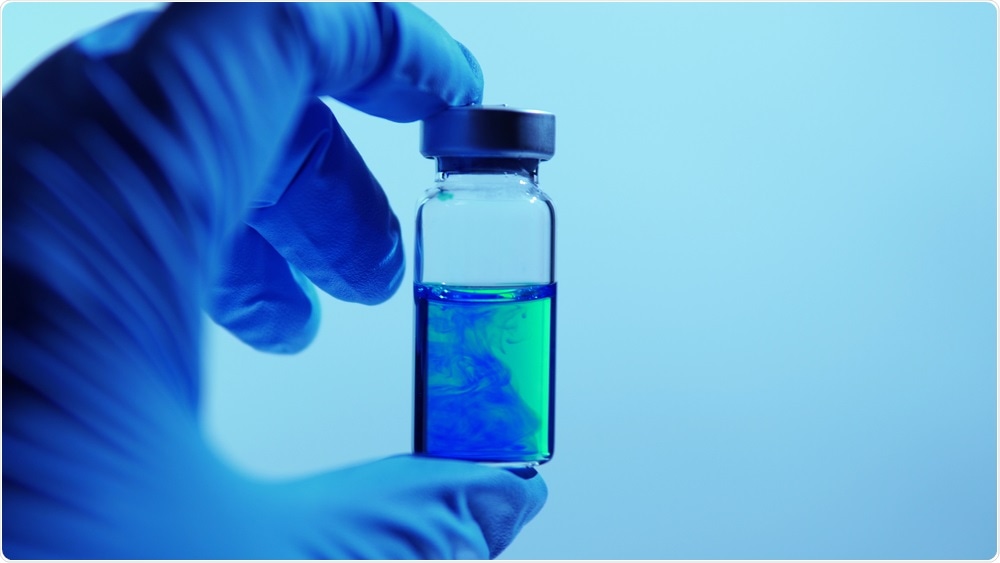Ongoing research on vaccines against the novel severe acute respiratory syndrome coronavirus 2 (SARS-CoV-2), which is the virus responsible for the coronavirus disease 2019 (COVID-19), involves strategies to increase the longevity of the immune response triggered by the vaccine.
 Study: Vaccination after prior COVID-19 infection: Implications for dose sparing and booster shots. Image Credit: Golden Shrimp / Shutetrstock.com
Study: Vaccination after prior COVID-19 infection: Implications for dose sparing and booster shots. Image Credit: Golden Shrimp / Shutetrstock.com
Background
The current vaccines target the SARS-CoV-2 spike (S) protein, which effectively elicits an immune response. Multiple studies have confirmed that neutralizing antibody titers are a strong correlate of protection against re-infection.
However, the strength of the immune response appears to wane with time, thus increasing the chance of re-infection. With the emergence of newer SARS-CoV-2 variants, the potency of neutralizing antibodies has also been reported to reduce significantly. Thus, there needs to be a way by which vaccines can prevent infection against multiple variants.
Reports of reinfection in individuals with prior COVID-19 are also increasingly being reported, albeit with mild symptoms. In the current study, scientists have explored the ability to strengthen the otherwise progressively diminishing immune response by vaccinating people who have previously been infected with COVID-19. They have also presented ways to increase vaccine efficiency to ensure protection against multiple variants.
Current COVID-19 vaccines have been developed using the ancestral strain of the S protein expressed by SARS-CoV-2. These vaccines have been designed to elicit an immune response that can reduce the severity of COVID-19, rather than completely prevent infection.
However, currently circulating SARS-CoV-2 variants, such as the Delta variant, have several mutations. This helps the variants evade much of the immune response generated in the body post-vaccination and/or following a previous infection with SARS-CoV-2. In fact, quantification assays have shown around a 4-fold reduction in neutralizing immune responses to the Delta variant as compared to the ancestral strain.
Reformulated vaccines expressing variant S proteins are undergoing evaluation and are likely to improve the neutralizing response to variants. However, such vaccines may boost responses to conserved regions on the viral genome, rather than elicit responses to the new variants, a phenomenon known as immune imprinting or “original antigenic sin.” More research on the identification of newer targets for vaccines is therefore warranted.
In the current scenario, where re-infections have started emerging in patients previously infected with mild-moderate COVID-19, it is advisable to vaccinate them with doses of messenger ribonucleic acid (mRNA) vaccines with a second dose after a 3-week gap to lengthen the protection span of the produced neutralizing antibodies. This may also help in strategizing booster doses for the population.
About the study
The authors of a commentary published in journal EBioMedicine observed antibody and T-cell responses in a cohort of 14 subjects with prior mild-moderate COVID-19. All of these individuals had received the BioNTech/Pfizer BNT162b2 vaccine. Additionally, 27 subjects previously uninfected were vaccinated with the same vaccine and used as controls.
In concordance with prior studies, researchers observed a remarkable boost in S protein-specific neutralizing antibodies in vaccinated subjects with prior COVID-19. In fact, their antibody levels were found to be almost 20-fold higher after the first dose and about 6-fold higher after the second dose as compared to uninfected controls. Importantly, the added benefit of a second vaccine dose at the standard 3-week interval was a modest increase of about 2 fold in previously infected subjects.
The researchers also quantified the level of T-cell responses using interferon (IFN)-gamma and intracellular cytokine staining assays. Herein, IFN-gamma release responses to the S protein were about 2-fold higher in previously infected subjects as compared to uninfected subjects after vaccination. The T-cells responses measured by intracellular cytokine staining assays were similar, albeit in a small subset of subjects.
Another interesting observation made in the study was the possibility of utilizing persistent nucleocapsid-specific T-cell responses in previously infected patients as potent targets for newer vaccines. This theory has been proven in studies involving small animals.
CD4+ T-follicular helper (TFH) cells present in lymph nodes are the original determinants of neutralization antibodies, instead of CD4 and CD8 T-cells. Understanding how best to induce or boost effective TFH by vaccination, rather than by only depending on the total CD4 or CD8 T-cells, may be an efficient pathway to induce more potent neutralizing antibody responses.
Implications
The current study suggests that deferring the second vaccination of individuals with prior infection may be a more cost-effective strategy to re-boost neutralizing antibody titers in some populations. Targeting CD4 +TFH cells, which are more important in mediating adaptive immune responses, over CD4+ or CD8+ T-cells to induce antibody production, might be a useful technique to produce more potent vaccines that are effective against emerging SARS-CoV-2 variants.